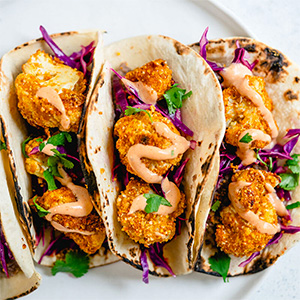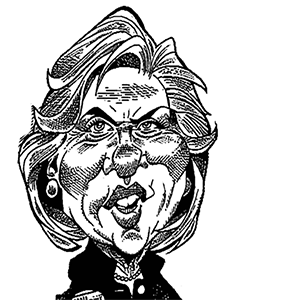Recipes
/Home & Leisure

Cookbooks 2025 gift guide: 5 notable cookbooks including the science of barbecue, the magic of cheese and more
CHICAGO -- With the holiday season coming to a close shortly, a gift guide to cooking treats and meals by some Chicago-based chefs might offer ideas for last-minute gifts.
Here’s a selection of five cookbooks that came out this year that could spark some inspiration in the kitchen.
“The Hoosier Mama Book of Breakfast Bakes: Biscuits, ...Read more
3 chefs share the traditional holiday recipes they make at home
MINNEAPOLIS -- The holiday season is often defined by the dishes that make their way to the family table; recipes steeped in tradition, memory and meaning.
For three Minneapolis chefs, cooking at home during the winter holidays is as much about honoring their roots as it is about feeding loved ones. Each has shared a recipe that holds a special...Read more

It's party time: 4 quick dips for your festive party spreads
For our extended family holiday gatherings, we’ve dispensed with the big meal and go all in on appetizers.
We’ve found that not only does it take the pressure off the host — everyone brings an appetizer or two — but it gives the day a more laid-back feel for guests, too. No need to rush over for a predetermined mealtime; just come when ...Read more
Gretchen's table: Blueberry French toast casserole gets a tangy finish from homemade lemon curd
Family is always welcome during the holidays, but feeding a house full of guests can be a headache, especially when it comes to breakfast.
Rolling out of bed before everyone else wakes up can prove a challenge in itself, and if the day ahead involves last-minute shopping at the mall, a day trip to a museum or visits with other family members, ...Read more

The 14 best whiskeys to give this holiday season
Technically it’s always whiskey-sipping season in my house. But there is something extra cozy about the December chill that sparks the spirit of giving whiskey, too. The glint of colorful lights on a big ice cube rattling through a tumbler of amber elixir. The toasty vanilla perfume of barrel char, the punchy spice of distilled rye, a whiff of...Read more
From Marietta to millions, 'Elf on the Shelf' turns 20
ATLANTA -- Traditions around the holidays are meant to be passed down for generations: songs, ornaments, recipes. So creating a new tradition that resonates with families worldwide is nothing short of a Christmas miracle.
But that is exactly what metro Atlantans Carol Aebersold and her twin daughters Chanda Bell and Christa Pitts have pulled ...Read more

EatingWell: Holiday entertaining made easy with cranberry-brie crostini
With just three ingredients, you can pull together an impressive appetizer perfect for holidays or dinner parties. The tangy cranberries cut through the richness of the cheese to create a balanced bite. This quick appetizer can be easily doubled to feed a crowd.
3-Ingredient Cranberry-Brie Crostini
Serves 12
Active Time: 10 minutes
Total ...Read more

Environmental Nutrition: Debunking dietary deceptions: Do eggs raise your cholesterol?
For years, even decades, common wisdom was that if you wanted to eat a heart-healthy diet, you should avoid eating eggs, which are high in cholesterol. Actually, egg whites were given a pass, because the yolks contain all the cholesterol. The rationale was that dietary cholesterol would raise levels of cholesterol in the blood, especially LDL (�...Read more

Seriously Simple: This classic Jewish deli soup reminds me of my mother
My mom really wasn’t a great cook, which I sometimes think is why I was so interested in food and cooking. She had four kids and making dinner every night was not a thrill for her, to say the least. But she did have her specialties like barbecued steak and great California salads. And this delicious soup is the taste memory I think about and ...Read more

JeanMarie Brownson: Duck breasts deliver on bold taste for an intimate holiday dinner
Great hosts have great tricks. For a crowd, a spiral-sliced ham, served with homemade biscuits and a tart chutney, never fails to impress. For family dinners, chicken roasted with smoked salt and olive oil, bronzed to a golden finish, keeps them coming back for more.
For an intimate holiday dinner, boneless duck breasts, served with a creamy ...Read more

The Kitchn: This endlessly comforting jambalaya is the ultimate one-pot meal
As a New Orleans native, jambalaya is a comfort food for me, as it is for most Louisianans. I’ve grown up eating it at nearly every big event, from family gatherings to game days. The big-batch, ...Read more

The Kitchn: This pillowy potato bread is an easy, homemade loaf anyone can make
Just the thought of a freshly baked loaf of bread invokes warm, cozy feelings. Making bread at home is a worthy endeavor, and with the right recipe (such as this one!) it can be simple and rewarding.
Potato bread is special ...Read more

Chef's table: He makes Appalachian cuisine that's worth the trip to West Virginia
Though he grew up on a dairy farm, Matt Welsch never thought much about food beyond what was on the table for lunch or dinner.
"I wanted to be a bus driver," the 48-year-old chef admits with a grin as he sits inside Vagabond Kitchen, the slow-food restaurant he opened in the McLure Hotel in downtown Wheeling, West Virginia, in 2014.
Born three...Read more

Hot chocolate? Bah, humbug!
Like a recovering alcoholic who knows exactly when he took his last drink, I can tell you when I had my last cup of hot chocolate.
It was Nov. 17, 2020. A Tuesday.
It's not that I quit cold turkey. It's not that I said I would never have hot chocolate again. It's not that I had the best hot chocolate of my life on that day (though it happens ...Read more

Is food no longer what makes a great restaurant great?
It’s become a well-documented fact that people dining out want a memorable experience, whether it’s eating in a fashion boutique or having an AI-chef prepare your meal. But the full-on obsession with spectacle had not been so apparent to me until a recent dinner at the world-renowned Eleven Madison Park in New York City.
It started with a ...Read more

EatingWell: Your new favorite festive side dish is crowd-approved
This colorful gratin dish livens up any holiday plate. Creamy melted Gruyere is comforting, while a blend of cumin, nutmeg and cayenne pepper lends a warm, spicy note.
Kale-Butternut Squash Gratin
Serves 8
Active Time: 45 minutes
Total Time: 1 hour, 35 minutes
2 teaspoons canola oil
1 cup chopped onion
6 cloves garlic, minced
2 (5-ounce)...Read more

Environmental Nutrition: Food allergies can create a minefield for holiday celebrations
The holidays are coming up and they almost always involve family gatherings, office parties, neighborhood get-togethers, and special holidays meals, all with lots and lots of food. For most of us, it’s a chance to enjoy food and drink that maybe aren’t a part of our usual fare. But if you have food allergies, these celebrations can literally...Read more

The Kitchn: This festive sangria recipe is perfect for Hanukkah
During Hanukkah there are eight nights of celebrating to do, so it only feels right to have a signature cocktail on hand for any planned or unplanned gatherings that come your way. Make that signature cocktail this festive sparkling wine sangria. Gently spiked with pear liqueur and filled with fresh pear slices, it’s a holiday ...Read more

Seriously Simple: New Year’s Eve shrimp and scallop stew, a celebratory dish
If you are planning on staying home this year and having a small group for dinner, I recommend making this crowd-pleasing stew for your main course. Seafood has become so expensive that I usually save it for special occasions. And New Year’s Eve is certainly a time for celebration.
The soup base and aioli can be made ahead and finished at the...Read more

The Kitchn: These Southern deviled eggs will be the hit of your New Year’s Eve party
Deviled eggs are the perfect party food. Set a platter of them on a buffet, and you can safely assume they’ll be gone in minutes — such is the appeal of a good deviled egg. But...Read more








